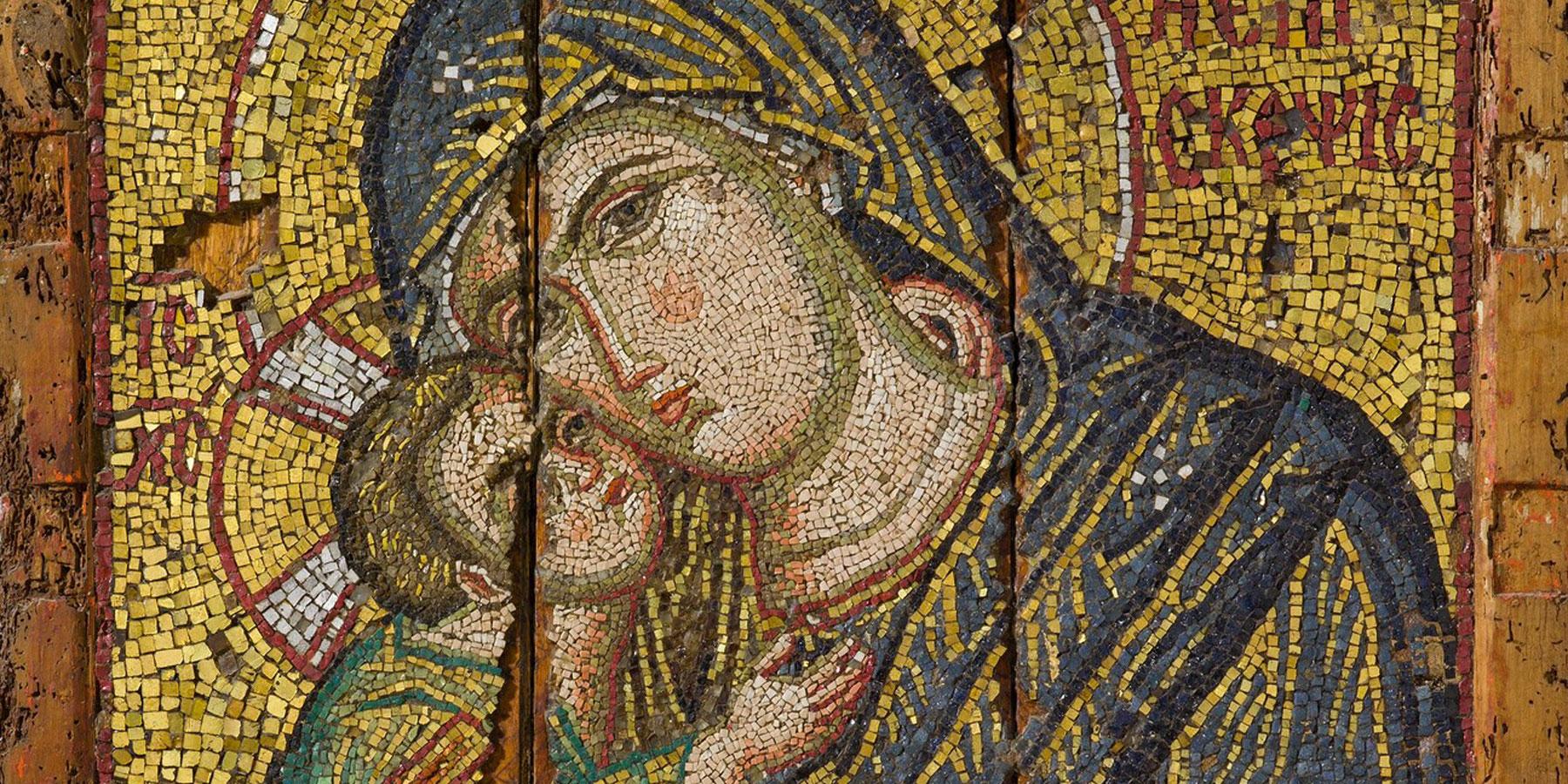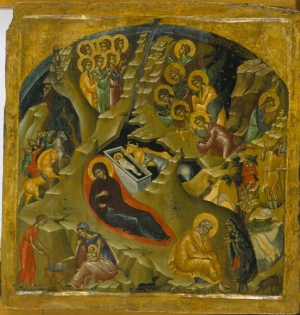In 1204 crusaders from Western Europe abandoned their quest to recapture the Holy Land and sacked Constantinople. They installed a Frankish knight, Count Baldwin of Flanders, on the imperial throne and partitioned the empire among themselves. The Byzantine aristocracy fled and established successor states centered on Nicaea in Asia Minor, Trebizond on the Black Sea, and Epirus in northwestern Greece. The period known as the Latin Conquest ended in 1261 when the army of Emperor Michael VIII Palaiologos of Nicaea recaptured Constantinople and restored the Byzantine state. The empire never fully recovered, but Byzantium experienced a final artistic flowering during the reign of the Palaiologan dynasty, which lasted until succumbing to the Ottoman sultan Mehmed II in 1453.
Latin- and Greek-speaking populations intermingled during the Latin Conquest and afterward in territories that the Palaiologans never regained. One result was the creation of hybrid works of art combining Gothic and Byzantine styles and imagery. The island of Crete, a Venetian possession from 1211 to 1669, attracted artists from Constantinople and became a major artistic center serving both Orthodox and Catholic clients. Merchants there exported hundreds, probably thousands, of icons to Italy and Northern Europe, influencing religious painting in Western Europe. Renaissance patrons such as the Medici in Florence also collected Byzantine mosaics and manuscripts, which they prized for their preciousness, rarity, and as relics of a lost Christian empire.







